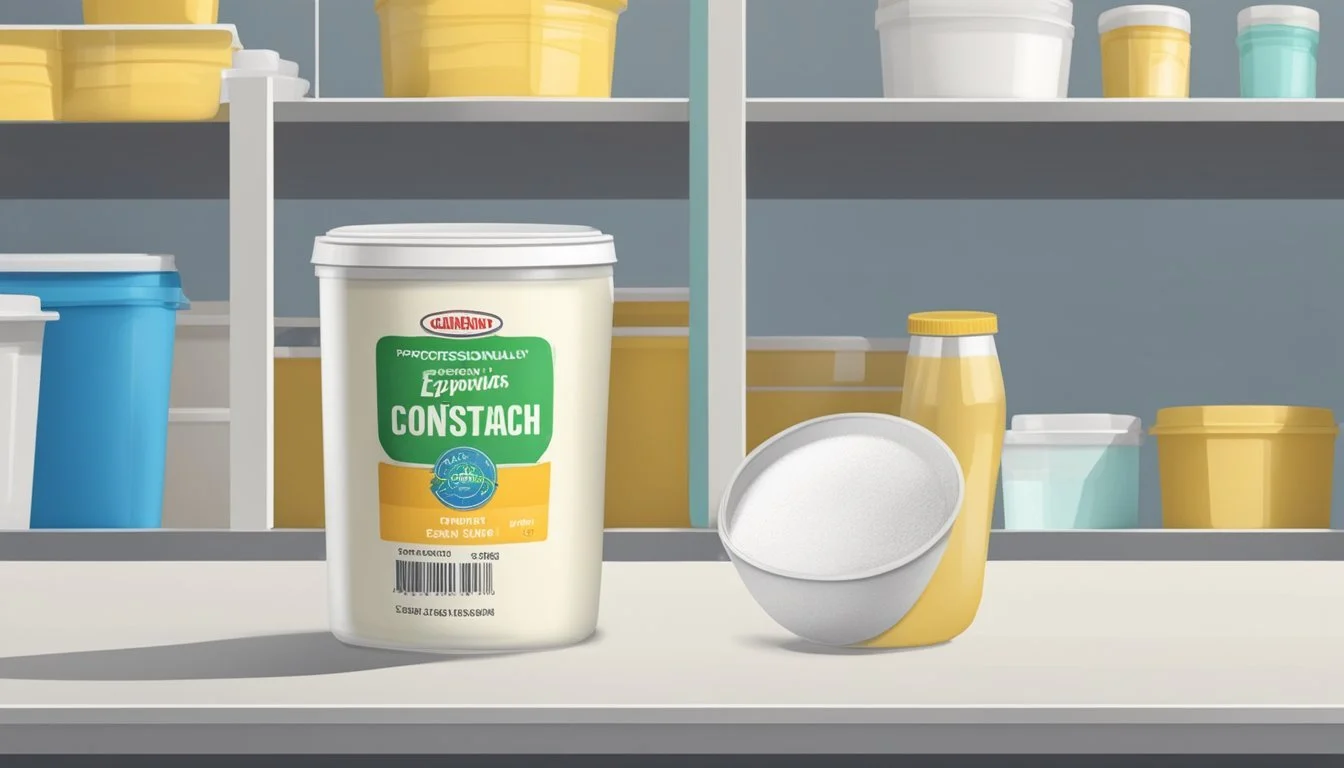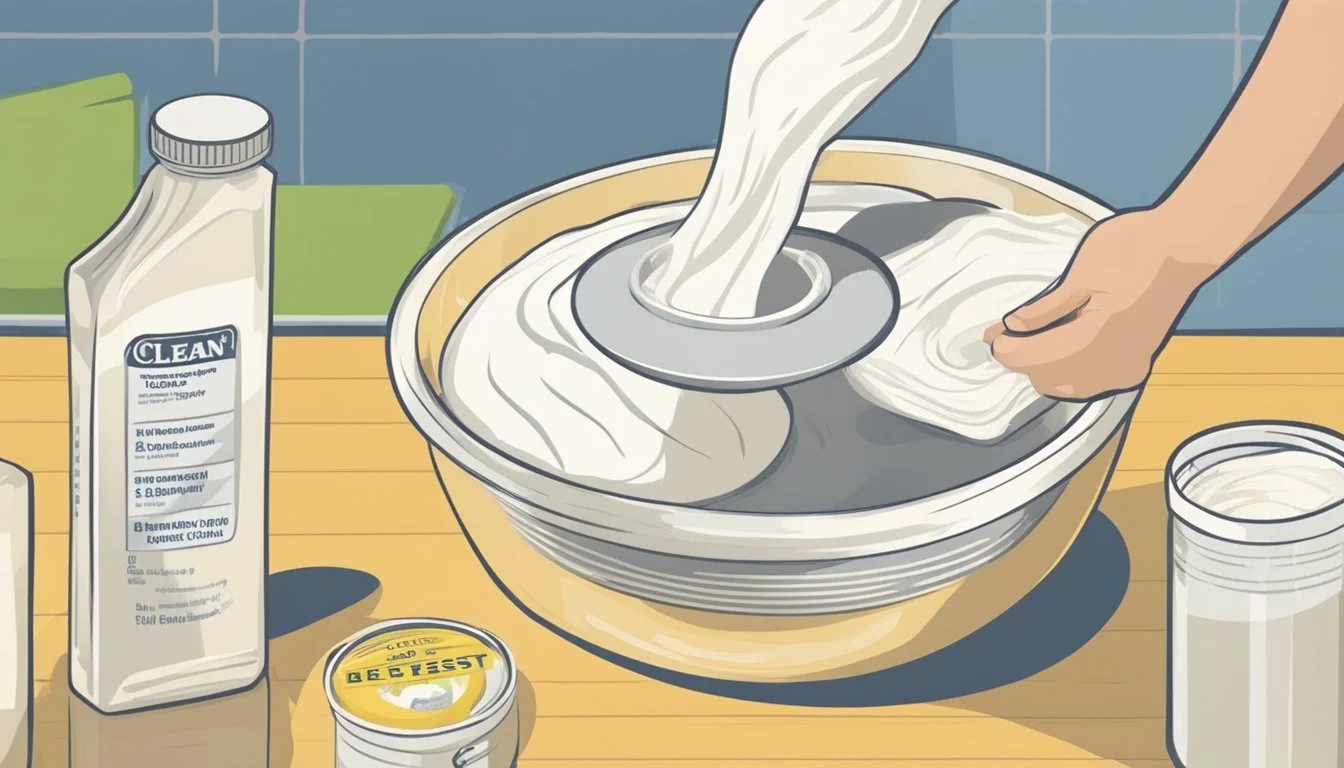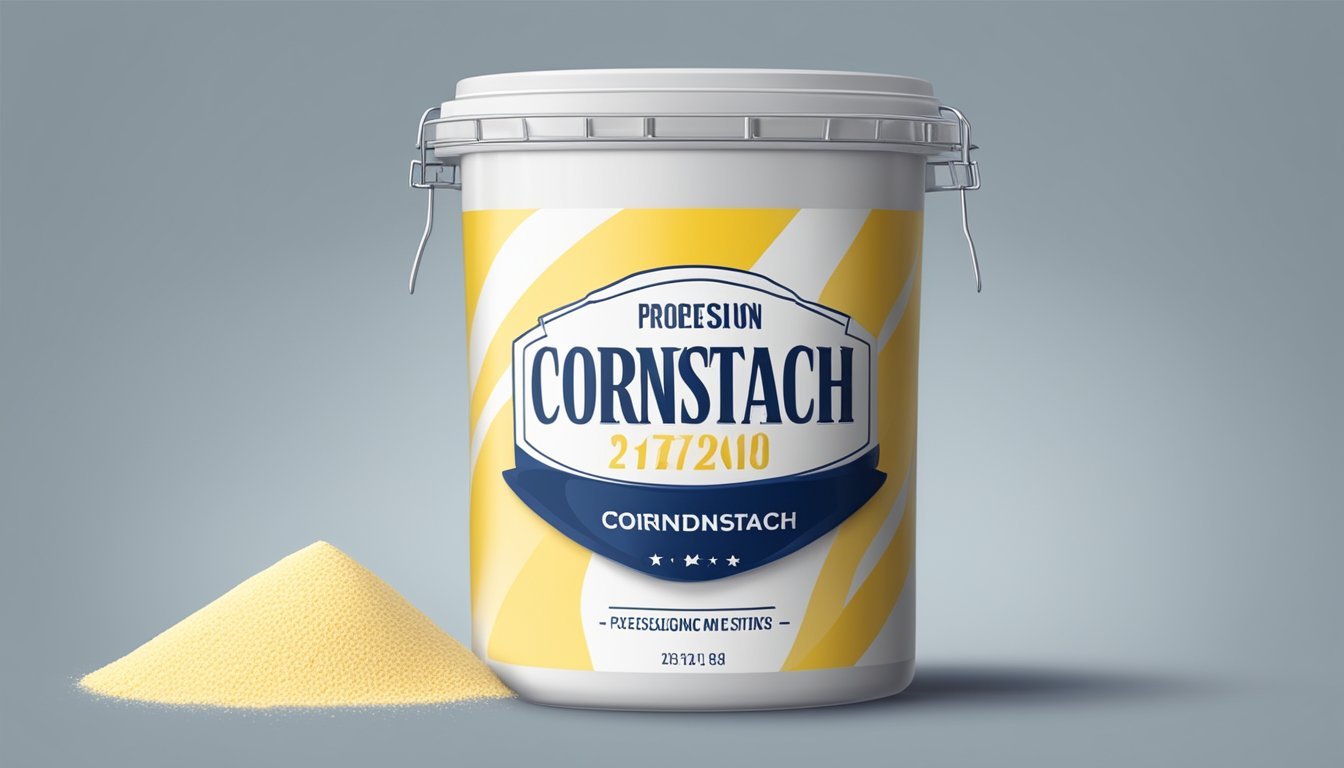Does Cornstarch Go Bad?
Understanding Its Shelf Life and Storage
Cornstarch is a staple in many kitchens, valued for its thickening properties in cooking and baking. It is a fine, powdery substance derived from the endosperm of corn kernels. One common question that arises among consumers is whether cornstarch can go bad or spoil. The durability of cornstarch is noteworthy; when stored appropriately in a cool, dry place, it has an indefinite shelf life. This resilience to spoilage is due to its low moisture content, which inhibits the growth of microorganisms that typically cause food to deteriorate.
Despite its stability, cornstarch can be compromised if not stored under the right conditions. Moisture and pests are the main culprits that can affect the quality of cornstarch. When exposed to dampness, cornstarch may clump together or develop mold, while insects can contaminate the powder if the container is not sealed properly. As such, it is crucial for users to ensure that the cornstarch is kept in an airtight container away from sources of moisture and pest infestation.
It is also important to note that, although cornstarch doesn't lose its potency over time, the presence of strange odors, discoloration, or an off taste are indicators that the cornstarch may no longer be suitable for use. In these cases, it's best to err on the side of caution and discard any cornstarch that shows signs of spoilage.
Understanding Cornstarch
Cornstarch is a common kitchen staple renowned for its ability to thicken a variety of dishes. This section aims to clarify what cornstarch is and its critical role in cooking.
Defining Cornstarch
Cornstarch, also known as corn flour, is a fine, powdery substance derived from the endosperm of corn kernels. It's primarily composed of starch, which means it's a carbohydrate extracted from the grain. In contrast to wheat flour, cornstarch is gluten-free, making it a favorable alternative for those with gluten sensitivities or celiac disease.
Roles in Cooking
In the realm of cooking, cornstarch serves as a versatile thickening agent. It's often used to give the desired consistency to sauces, gravies, soups, and various baking recipes. When cornstarch is heated, it absorbs liquid and swells, a process that creates a thickened, semi-transparent texture typical of gravy or pie fillings.
To successfully thicken gravy or soups with cornstarch, she typically combines it with a cold liquid before adding it to the hot mixture to prevent clumping. Likewise, in baking, a baker might incorporate cornstarch to tenderize doughs and batters or as part of a gluten-free flour blend.
Cornstarch's neutral flavor and gluten-free properties make it a valuable component in creating thick, smooth textures in an array of dishes without altering taste or presenting dietary restrictions.
Storage Fundamentals
Proper storage is crucial to maintain the integrity and longevity of cornstarch. To ensure that it remains free from spoilage, one must consider the location of storage and the type of containers used.
Storage Locations
When selecting a storage location for cornstarch, one should opt for a cool, dry place. A pantry or a kitchen cabinet away from sources of heat and moisture is ideal. Storing cornstarch in the fridge is not recommended, as it can introduce unwanted moisture.
Pantry: Best for long-term storage, provided it's consistently cool and dry.
Kitchen Cabinet: A viable option as long as it's away from the stove, sink, or any area that experiences temperature fluctuations and humidity.
Appropriate Containers
Using airtight containers is key to protecting cornstarch from moisture and contaminants. Once opened, transferring cornstarch from its original packaging to an airtight container will maximize its shelf life.
Airtight Container: Preserves freshness and prevents moisture and pests from entering.
Original Packaging: If unopened, can suffice for storage; however, placing it inside an additional airtight container is advisable for added protection.
Storing cornstarch properly prevents microbial growth, insect infestation, and contamination from odors or other kitchen elements. By adhering to these storage fundamentals, the shelf life of cornstarch can be effectively prolonged.
Shelf Life Insights
Cornstarch is recognized for its prolonged shelf life, with its stability hinging on the absence of moisture and contaminants. This section explores the general shelf life under optimal conditions and the factors that can impact this duration.
General Shelf Life
Cornstarch, when stored properly, does not have a definitive expiration date and can last indefinitely. It is commonly agreed that cornstarch has an impressive shelf life owing to its inert nature.
How Long Does Cornstarch Last?
If kept dry and uncontaminated, cornstarch can remain usable for years, extending well beyond its 'best by date.'
Factors Affecting Shelf Life
Despite its longevity, certain factors can negatively affect the shelf life of cornstarch. It is imperative to avoid these conditions:
Moisture and Humidity: Exposure to moisture is the primary adversary of cornstarch, potentially leading to clumping, spoilage, and the presence of bacteria or fungi.
Contamination: Introducing foreign substances, including food particles or oils, can accelerate spoilage.
Storage Conditions: To maximize shelf life, cornstarch should be stored in a cool, dry place, away from strong odors which it can absorb. Its storage container should be airtight to prevent moisture ingress and insect contamination.
Identifying Spoilage
When determining if cornstarch has spoiled, it's crucial to note that spoilage indicators are often visible or detectable by smell. One should pay attention to these signs as they are the primary way to ensure the cornstarch is safe for use.
Visual Indicators
Careful inspection can reveal whether cornstarch has degraded in quality. Key visual signs include:
Clumps: Cornstarch should be a fine, powdery substance. The presence of clumps may indicate that moisture has been introduced.
Color: Pure cornstarch is characteristically a bright white color. Any discoloration, such as a yellowish or grey hue, can suggest contamination.
Mold Growth: Although not common, mold can develop if cornstarch is stored improperly. If one sees any spots indicative of mold, the cornstarch should be discarded.
Olfactory Clues
The sense of smell can also aid in identifying spoiled cornstarch. Notable olfactory signs include:
Odor: Fresh cornstarch should not have a noticeable smell. An off or unusual odor is a tell-tale sign that the cornstarch may have become contaminated and shouldn't be used.
Preventing Contamination
Cornstarch's longevity depends on safeguarding it from elements that can compromise its quality. Moisture and insects are the primary threats, but with proper preventive measures in place, contamination can be minimized.
Contamination Sources
Moisture is a notable culprit that leads to cornstarch spoilage by promoting mold growth and clumping. Humidity in the air can also be absorbed if cornstarch is not stored correctly, reducing its efficacy. Insects, particularly pantry pests like weevils or various beetles, can infiltrate cornstarch if it is left unsecured. An insect infestation not only renders the starch unusable but could spread to other pantry items as well.
Protective Measures
To protect cornstarch from moisture:
Store it in a cool, dry environment, away from any sources of liquid.
Use airtight containers that prevent humidity from seeping in.
Check regularly for signs of moisture and repackage if necessary.
To avoid insect contamination:
Inspect cornstarch for any signs of bugs before use.
Keep the pantry clean of crumbs and spills to deter pantry pests.
Transfer cornstarch to sealable glass or plastic containers immediately after opening to prevent pest access.
Regularly examine the pantry for insect infestation and address promptly.
Substitutes and Alternatives
When cornstarch is unavailable or unsuitable for dietary needs, various alternatives offer comparable thickening properties for cooking and baking applications.
Substitute Options
Wheat Flour: An accessible staple in most pantries, wheat flour can serve as a thickening agent, although it generally requires double the quantity to match the thickening power of cornstarch. It's suitable for roux and gravies but may impart a slightly different texture and taste.
Ratio: 2:1 (wheat flour)
Arrowroot Powder: Arrowroot is a starch extracted from rhizomes that serves as a direct substitute for cornstarch. It gels at a lower temperature, making it ideal for delicate sauces and pie fillings.
Ratio: 1:1 (arrowroot)
Potato Starch: This gluten-free alternative thickens quickly and effectively but does not hold up well to prolonged cooking or freezing. It’s therefore best used in dishes served immediately.
Ratio: 1:1 (potato starch)
Corn Flour: Different from cornstarch, corn flour contains protein and fiber and is a whole-grain flour. It is denser and hence not a direct substitute, but can be used for breading or in combination with other thickeners.
Quinoa Flour: Quinoa flour, rich in protein and nutrients, has thickening capabilities, but it also alters the flavor of the dish slightly, imparting a nuttier taste.
Comparing Alternatives
Wheat Flour vs. Corn Flour: Wheat flour is more readily available and offers a higher protein content compared to corn flour. Users should be aware that wheat flour does not thicken as effectively as cornstarch and may leave a cloudy appearance.
Efficiency in Thickening: Arrowroot and potato starch are similar to cornstarch in their thickening efficiency and can often be used in equal measurements. They are excellent choices for those requiring a gluten-free option.
Taste and Nutritional Profile: Substitutes like quinoa flour can provide additional nutritional benefits such as increased protein, but may introduce a distinct flavor to the dish that might not be desirable in all recipes.
When selecting an alternative, consider the cooking process, desired consistency, and dietary needs to ensure the substitute aligns with the outcome of the dish.
Additional Uses and Tips
Cornstarch is renowned for its thickening properties in cooking, but its utility extends beyond the kitchen. It can also be a valuable ally in the home for cleaning and maintaining items. Below are insightful ways to maximize its benefits.
Beyond Cooking
Thickening Agent: In culinary applications, cornstarch acts as a reliable thickener for stews and pies, providing the desired consistency without altering the flavor.
Example: To thicken a berry pie filling, mix 1 tablespoon of cornstarch with 2 tablespoons of cold water, and stir into the fruit mixture before baking.
Freezing: When freezing food, incorporating cornstarch can prevent ice crystals, ensuring a smooth texture upon thawing.
Example: Blend a teaspoon of cornstarch in sauces before freezing to maintain their consistency.
Practical Tips
Food Safety: Always store cornstarch in a cool, dry place in a tightly sealed container to prevent moisture and contaminants from affecting its quality.
Condition Action Moisture Discard if clumpy or foul smelling Pests Store in airtight containers to protect
Cleaning: Cornstarch can be used to remove greasy stains or polish silver without harsh chemicals, making it a versatile tool for cleaning tasks.
Example: To treat stains, sprinkle cornstarch on the affected area, let it sit to absorb the oil, then brush it off.
When it comes to using cornstarch, whether for thickening your favorite pie or ensuring food safety in freezing, the key is to remember its effectiveness in a variety of scenarios. Enjoy your cooking and cleaning experiences knowing that cornstarch is by your side.
FAQs and Conclusion
In considering cornstarch's longevity and proper storage methods, there are essential details to address. Questions commonly arise regarding its shelf life and the best practices for maintaining its quality. The information provided here is intended to dispel uncertainties and offer a coherent understanding of cornstarch preservation.
Frequently Asked Questions
Q1: Does cornstarch go bad?
A1: Cornstarch is renowned for its extended shelf life and does not typically spoil if kept dry and free from contaminants such as bugs or moisture.
Q2: How should cornstarch be stored?
A2: To preserve cornstarch, it should be stored in a cool, dry place, ideally in an airtight container that prevents moisture and pests from contaminating the product.
Q3: Can you use cornstarch past its expiration date?
A3: While cornstarch does not inherently go bad after its expiration date, it's crucial to inspect it for any signs of spoilage such as an off smell or change in texture before use.
Final Thoughts
The longevity of cornstarch as a baking agent is substantial when proper food storage techniques are employed. Storing cornstarch in an environment that mitigates the risk of moisture exposure ensures that it remains a reliable ingredient. As a staple in many kitchens, its resistance to spoilage makes it a dependable addition to culinary creations, provided attention is given to storage conditions.







